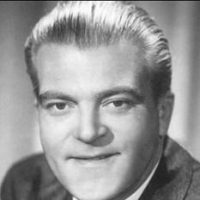
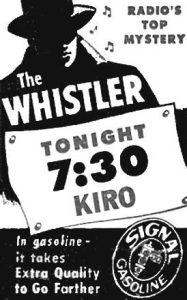 “I am the Whistler, and I know many things, for I walk by night. I know many strange tales, hidden in the hearts of men and women who have stepped into the shadows. Yes… I know the nameless terrors of which they dare not speak.”
“I am the Whistler, and I know many things, for I walk by night. I know many strange tales, hidden in the hearts of men and women who have stepped into the shadows. Yes… I know the nameless terrors of which they dare not speak.”
The Whistler (1942-55) aired “Stranger in the House” on September 2, 1946 as the 223rd of its 760+ episodes (depending on how one counts). It is only the eighth episode of the show we have run, three coming in 2017, the fourth in September of 2019 and the fifth, sixth, and seventh in March, July, and November of 2020. For newcomers, introductory background material on the show is reprised below (it was the most popular west coast radio show for many years), with the background providing context for its not unique but unusual narrative format.
There were two attempts for The Whistler to break into the east coast market that didn’t last long (July-September 1946, and March 1947-September 1948) due to mediocre ratings, so if these episodes are counted as part of the overall scheme of things, the total number of shows ends up somewhere around 769. Over its thirteen-year west coast run it never took a summer break and ran continuously, certainly some kind of record, and its sole west coast sponsor, Signal Gas & Oil remained loyal throughout. While the show had several narrators over the years, the one who held the longest tenure and is most associated with the show was Bill Forman (photo top right).
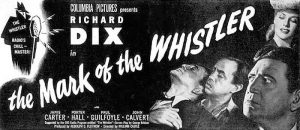
The Whistler has an interesting backstory, and would take much too long to go into here to give it the justice it warrants. A few points of interest will suffice for this offering of the beloved mystery show, the first of which is the use of the narrator as more than just a host. From Jim Ramsburg’s Gold Time Radio entry on The Whistler: “Like The Shadow’s first personification a dozen years earlier, Inner Sanctum’s ghostly Raymond in 1941 and The Mysterious Traveler in 1943, The Whistler stood outside the stories he narrated. Unlike the others, he used a unique second-person, present tense technique as if to talk directly with the central character of his stories – often an innocent drawn into the plot by circumstances or an amateur driven to murder as a last resort.” A second point of interest has to do with the trademark whistling that opens each episode. From Radio Spirits’ Blog Archive on The Whistler: “The program featured one of radio’s classic openings: a haunting 13-note theme created by Wilbur Hatch (who also composed the show’s eerie mood music). Hatch estimated that only one person in twenty could whistle this exact melody, and for the show’s thirteen-year duration one person pretty much did—a young woman named Dorothy Roberts. In fact, during the war years, Roberts had to get permission from Lockheed (where she worked) to leave her factory job in order to make it to the program and whistle every week.”
The radio show proved popular enough that Columbia Pictures made eight Whistler films from 1944-48, all but one starring Richard Dix: The Whistler (1944), The Mark of the Whistler (1944), The Power of the Whistler (1945), The Voice of the Whistler (1945), Mysterious Intruder (1946), The Secret of the Whistler (1946), The Thirteenth Hour (1947) and The Return of the Whistler (1948). The show was brought to early television in 1954-55, but never caught on. Nevertheless (and due in great measure to roughly 500 of the estimated 700+ original shows still surviving–and the movies still showing up on classic movie tv channels), The Whistler probably enjoys a larger audience today than it did in its heyday during the Golden Age of Radio.
As its starting point “Stranger in the House” employs a situation with countless variations and one used to fuel many a radio script or TV episode—that of the inevitable complications arising from those written into wills as inheritors. Sometimes it’s the dying patriarch of a large estate drawing relatives like flies to his bedside, each hoping they are in the old man’s will. Sometimes it is written into a will that the sole inheritor can claim this or that only upon their 21st birthday (but should they not survive until then, a secondary named person shall inherit the riches provided for in the will, and thus a motive for murder is a possibility), or sometimes, knowing one will inherit large wealth upon the death of the patriarch, this certain inheritor chooses not to wait for a natural death and attempts to speed up the death of the one bequeathing an inheritance, leading to all sorts of problems and oft times murder most foul. And there are other scenarios surrounding a will and who gets the spoils and when, which brings us to the cleverly written “Stranger in the House,” where a plan to inherit a large sum is thwarted, but not exactly how you might guess. No, not at all. Just when you think you might have the bad guy (or gal) and their clever scheme all figured out it falls apart in a double twist ending guaranteed to make you reassess who you thought was the true “Stranger in the House.”
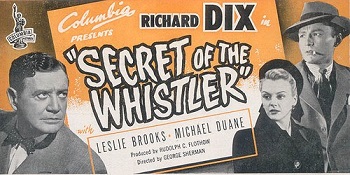
Play Time 29:33
{“Stranger in the House” aired on a Monday evening, on Labor Day of 1946 to be exact. The next day found the neighborhood gang in the mood for more skullduggery and so turned to detective and mystery magazines at the corner newsstand. Dime Detective (1931-53) was one of the longest running of the detective magazines, making sure its faithful readership stayed that way. It was a monthly in 1946. Dime Mystery (1932-50) began as a more or less traditional pulp mystery magazine, but after only 10 issues changed its format to feature stories of “weird menace,” which proved much more profitable. It was a bi-monthly in 1946. New Detective (1941-55) featured crime stories more often centered on police detectives penned by some of the most popular authors of the time. It too was a bi-monthly in 1946.}
[Left: Dime Detective, Sep. ’46 – Center: Dime Mystery, Sep. ’46 – Right: New Detective, Sep. ’46]
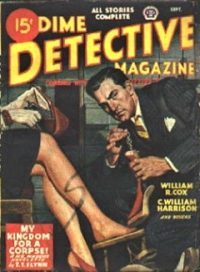
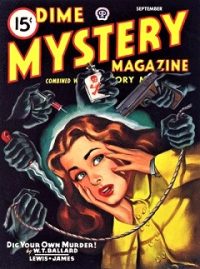
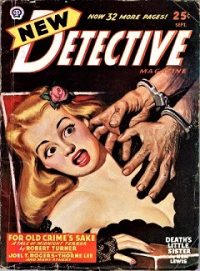
To view the entire list of Old Time Radio episodes go here.